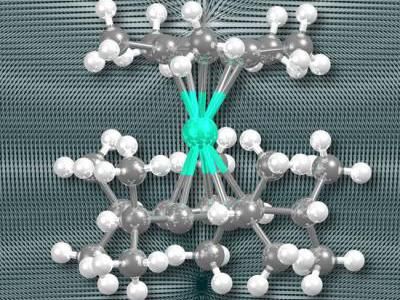Electrified magnets
Researchers uncover a new way to handle data
The properties of synthesised magnets can be changed and controlled by charge currents as suggested by a study and simulations conducted by physicists at Martin Luther University Halle-Wittenberg (MLU) and Central South University in China. In the journal "Nature Communications", the team reports on how magnets and magnetic signals can be coupled more effectively and steered by electric fields. This could result in new, environmentally friendly concepts for efficient communication and data processing.
Magnets are used to store large amounts of data. They can also be employed in transmitting and processing signals, for example in spintronic devices. External magnetic fields are used to modify the data or the signals. This has few drawbacks. "Generating magnetic fields, for example with the help of a current-carrying coil, requires a lot of energy and is relatively slow," says Professor Jamal Berakdar from the Institute for Physics at MLU. Electric fields could help. "However, magnets react very weakly - if at all - to electrical fields, which is why it is so hard to control magnetically based data using electrical voltage," continues the researcher.
Therefore, the team from Germany and China looked for a new way to enhance the response of magnetism to electrical fields. "We wanted to find out whether stacked magnetic layers reacted fundamentally differently to electrical fields," explains Berakdar. The idea: The layers could serve as data channels for magnetically based signals. If a metal layer, for example platinum, is inserted between two magnetic layers, the current flowing in it attenuates the magnetic signal in one layer but amplifies it in the other. Through detailed analysis and simulations, the team was able to show that this mechanism can be precisely controlled by tuning the voltage. This drives the current and allows for a precise and efficient electrical control of the magnetic signals. In addition, it can be implemented on a nanoscale, making it interesting for nanoelectronic applications.
The researchers went one step further in their work. They were able to show that the newly designed structure also responds more strongly to light or, more generally, to electromagnetic waves. This is important if electromagnetic waves are to be guided through magnetic layers or if these waves are to be used to control magnetic signals. "Another feature of our new concept is that this mechanism works for many material classes, as simulations under realistic conditions show," says Berakdar. The findings could thus help to develop energy-saving and efficient solutions for data transmission and processing.
Original publication
Other news from the department science

Get the chemical industry in your inbox
By submitting this form you agree that LUMITOS AG will send you the newsletter(s) selected above by email. Your data will not be passed on to third parties. Your data will be stored and processed in accordance with our data protection regulations. LUMITOS may contact you by email for the purpose of advertising or market and opinion surveys. You can revoke your consent at any time without giving reasons to LUMITOS AG, Ernst-Augustin-Str. 2, 12489 Berlin, Germany or by e-mail at revoke@lumitos.com with effect for the future. In addition, each email contains a link to unsubscribe from the corresponding newsletter.



























































